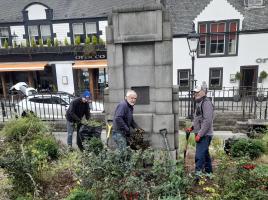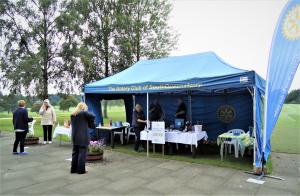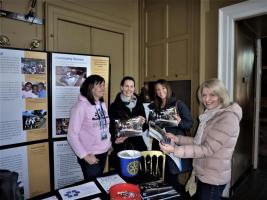Club Meeting
Thu, Oct 7th 2021 at 6:45 pm - 8:00 pm
Speaker: Chris O’Connell, Scottish Canals,
Raffle: Irene Brownless,
Reception: Ed Kelly/Craig Mackenzie,
Zoom Meeting,
Picture courtesy of Scottish Canals.

Inland waterways was the topic at the Rotary Club of South Queensferry's virtual meeting on October 7th when President Derek Clark welcomed speaker Chris O'Connell from Scottish Canals. Scottish Canals was formed in 2012. Formerly a division of British Waterways (Scotland), it runs the Caledonian, Crinan, Forth and Clyde, Monkland and Union Canals. Chris's well-illustrated presentation showed the development of these waterways from their construction between 1790 and 1822 to their present use as a leisure, recreational and conservation resource. Scottish Canals cares for 137 miles of waterway network including 17 reservoirs and the navigation rights of four lochs including Loch Ness.
The canals in central Scotland were built for the transport of coal from the coalfields to the emerging industrial areas of the early nineteenth century. As mines also needed timber for pit props, timber docks and sawmills were established around the canals. The Caledonian Canal, Scotland's longest, connecting Corpach near Fort William and Clachnaharry near Inverness, was built to allow marine traffic to avoid the dangerous Pentland Firth and French privateers during the Napoleonic Wars. In 1971 at the derelict remains of Shaw and McInnes Iron Works, a group of enthusiasts got together to clear the debris such as old cars, furniture and fridges that had accumulated in the canal. This early effort saw the beginning of conservation work on the canals.
The Falkirk Wheel, built as a millennium project, is a unique concept linking the Forth and Clyde and Union Canals. It replaces a flight of redundant locks and enables vessels once again to sail from Glasgow to Edinburgh.
Scottish Canals work closely with many agencies, including Historic Environment Scotland (HES). In recent years, they have installed new lock gates at Fort Augustus. A new lock gate has also been built at Bowling Harbour and the original arches have been turned into commercial properties. At Hamiltonhill it was possible to establish a nature reserve as salmon, otters and other wildlife have returned to the area with the decline of industrial traffic. Areas like Garscube Bridge, Claypits and Stockingfield Bridge have also been regenerated. During the Second World War, stop gates were built to prevent flooding should the canals be hit by bombs. Abandoned munitions were found in canal basins during restoration. This year, Scottish Canals have won three awards, one of which was for Europe's first 'Smart Canal'. The ground-breaking civil engineering project combined the 250 year old Forth and Clyde Canal with 21st century technology to mitigate flood risk as well as foster a massive regeneration of the area. Chris O'Connell's fascinating talk was greatly enjoyed. He was introduced by Ed Kelly and Craig MacKenzie gave the vote of thanks.
'What We Do' Main Pages:

We support Shelter Box, other international charities especially those working on relief after natural disaster.
more





